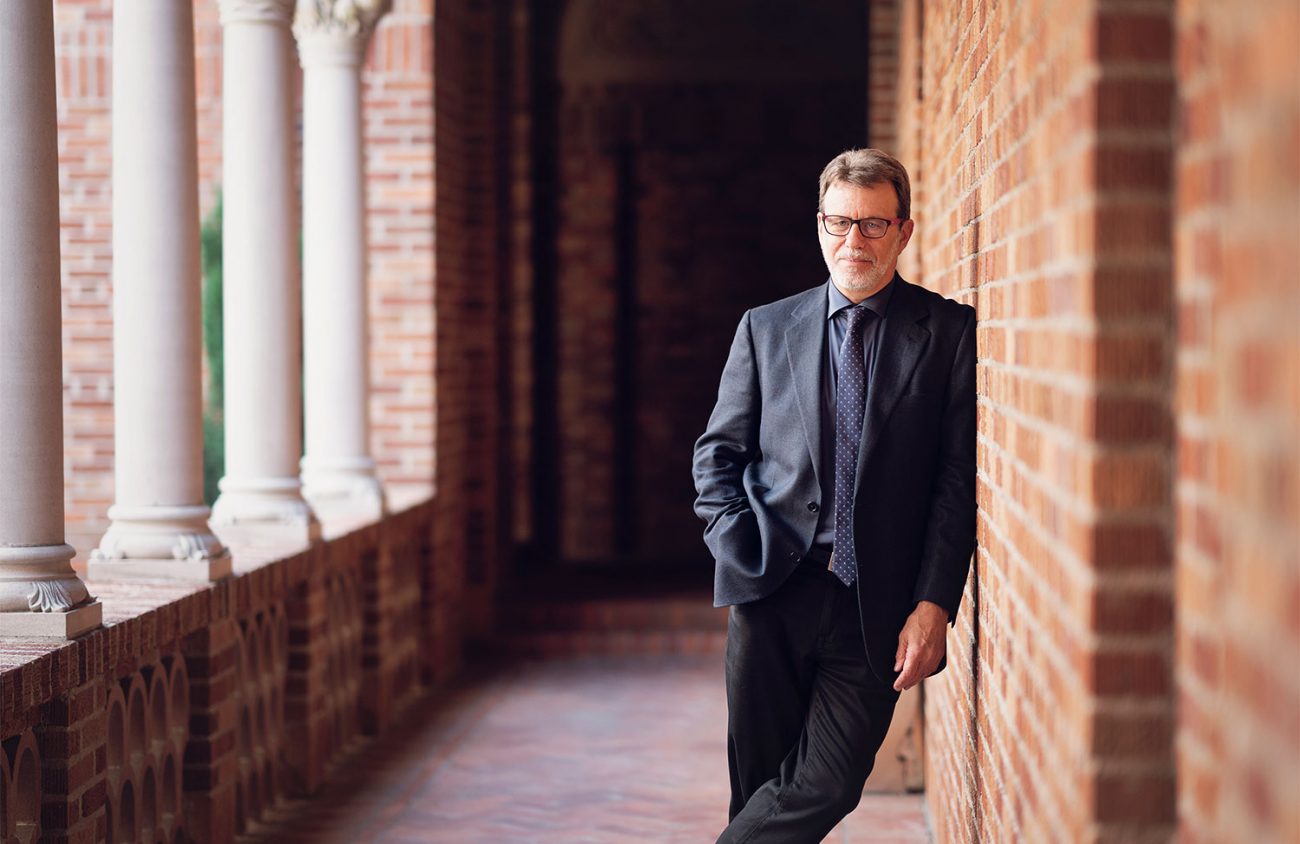John Weber took over this fall as executive director at the University of Oregon’s Jordan Schnitzer Museum of Art. Formerly the director of the Institute of the Arts and Sciences at the University of California, Santa Cruz, an institute he helped found in 2013, Weber sat down with Eugene Weekly soon after he started work at the UO in October.
The interview is edited for length and clarity.
EW: You’re coming in just after an ugly budget-cutting episode in which not only was the museum’s budget cut, but the director was forbidden to talk to the media about it.
Weber: Yeah.
How do you deal with that?
I see that this university is providing half of our budget. That’s great. They were looking at a huge set of cuts all across campus, and that’s the economic reality we’re living in right now. And it’s not just here — it’s other places, too. So I think the opportunity here remains really good in terms of how they did that decision that happened, and I’m really happy to be here and work with everybody.
Jill [Hartz, the former executive director] used to always say that the Schnitzer was, or could be, the community art museum for Eugene. Do you see that as a role?
I think all university museums appeal both to their off-campus and on-campus communities. I don’t see those two roles as in conflict or competition. The university’s (our biggest donor) mission is education, research and public service in some sense.
We will succeed or fail to the extent that we’re able to be part of that mission. And so I take that piece of it: the teaching piece of it, the student piece of it, the faculty collaboration piece of it. I take those super seriously, and frankly I just enjoy them a lot.
Are you going to teach here?
I can. We built that in that I could do that. I requested that. There are no plans at moment — not this term. I would love to because it’s really exciting being in class with a group of students.
We were talking before about regionalism. Is regionalism still a factor in art? Is the art being made in Portland and Eugene today any different from the art being made in Chicago?
Yes and no. There are ways in which different regions have artists who influenced them in traditions and grown up there and they have galleries and institutions, nonprofits and for-profits that have nurtured those traditions. In Chicago for example, there’s a kind of contemporary imagist tradition that goes back to the ’60s and ’70s and ’80s. And there are still people who are teaching there.
There are differences. Now, that said, I think there is legitimate interest in differences, and I’m happy that they exist, because I don’t think everything should be the same everywhere. There is a tendency toward a kind of herd behavior and homogeneity in the contemporary art world at the institutional and collecting level that comes via the mechanism of the market place.
What else do you want to say?
Eugene is actually quite new to me, though I know Portland well. This is an interesting combination of a state that I know quite well and I’ve always loved, and a situation at a university and in the community that is interestingly new. My wife’s an architectural historian by training.
We’ve always cared a lot about architecture, and that’s an interesting thing to be part of.
Be careful, we’ll be calling you up to criticize the local architecture.
Well, Eugene has made some moves over the past that a lot of people here will say maybe could have turned out better. I’m interested in the Knight campus, and what it’s trying to do and if there’s a way that the museum can be part of that. We’re working on some ideas.
Are you an artist?
I started out as an artist. My day job is now being a museum director. I’m not actually making art anymore, but that creative impulse goes into exhibitions and the museum. I do think of that as a making activity. Absolutely.
When I started making shows, I was more interested in going to the studio to talk to other artists and talk to them about their work, and I wasn’t going into my basement darkroom to do more prints — which was a rather lonely activity. That slowly morphed into thinking from shows to programs, thinking about audiences, then being an education curator in public programs, wanting to think at a slightly bigger scale and willing to move back into a teaching environment and more explicitly teaching in a museum.
What’s your cat’s name?
[He tells me.]But, do not publish that. I have a witness now [he gestures to museum spokesperson Debbie Williamson-Smith] that my cat’s name is off the record.
Sorry.
